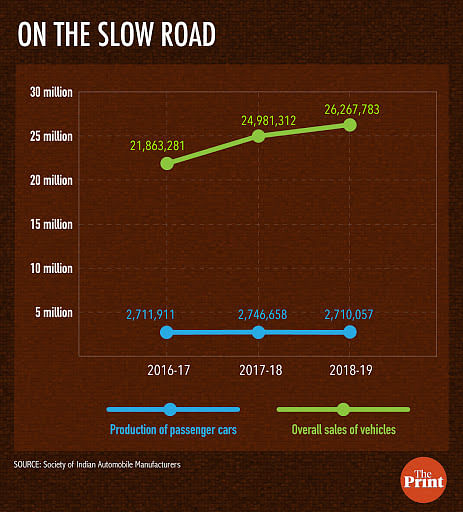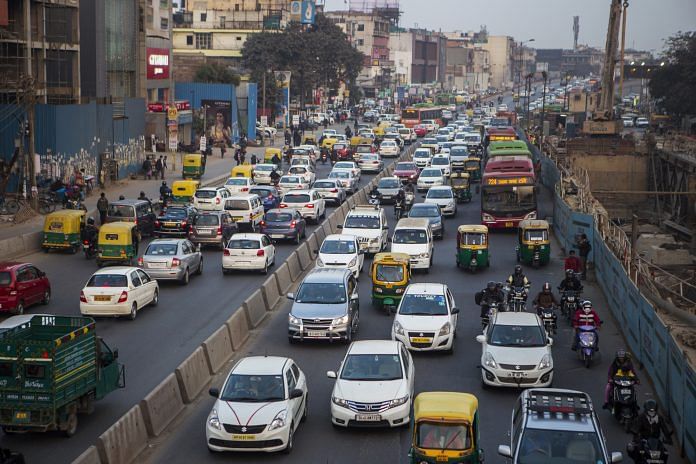New Delhi: The steep decline in automobile sales in April 2019 has not come as a shock to industry insiders, who say it has been a long time coming for a variety of reasons.
According to data released by the Society of Indian Automobile Manufacturers (SIAM), April saw a decline of 15.93 per cent in overall vehicle sales — the worst month in eight years for the industry.
The last several months have shown a downward trend, with the production of passenger cars — the largest segment — declining by 1.33 per cent in 2018-19 compared to the previous year. Utility vehicles showed less than 1 per cent growth, with only the vans segment showing a healthy growth of over 20 per cent.
In terms of sales, passenger car sales increased by 2.05 per cent, compared to 3.3 per cent the previous year. Overall vehicle sales, including two-wheelers and commercial vehicles, saw a 5.15 per cent growth in 2018-19 compared to 14.22 per cent in 2017-18.
Weak demand
Rakesh Batra, partner and national leader for automotive practice at EY India, pointed out that the demand for passenger vehicles had remained weak for a few months now.
“The smaller towns have been increasingly contributing to the overall demand for small vehicles, and much of this comes from the small and medium business customer segment. With the SME sector going through a cash crunch, sales in these cities have also been dented, and this is reflected in the overall numbers,” Batra said.
“Economic slowdown and lack of growth of adequate white-collar jobs have impacted sales in larger towns and metros,” he added.
According to the Federation of Automobile Dealers Association (FADA), inventory levels have continued to remain high and sales are unlikely to pick up in the near future.
FADA president Ashish Harsharaj Kale said in a press statement that the near-term outlook remained “negative to neutral with the absence of any immediate positive triggers which could affect retail sales”.

Also read: Growing slump in India’s $70 billion auto industry should worry the govt
Supreme Court order
The Supreme Court ruled in October that companies and dealers would not be allowed to sell Bharat Stage IV vehicles from 1 April 2020.
The Bharat stage emission standards have been put in place by the government to control air pollutants emitting from motor vehicles. The BS-IV norms had come into effect in April 2017.
The government, in 2016, had decided to skip BS-V norms and adopt BS-VI norms directly by 2020.
Lack of credit for vehicles
The liquidity squeeze in non-banking financial companies (NBFCs) has affected lending in the automobile segment.
At a time when banks, especially government lenders, have been grappling with their own problems, including high non-performing assets, a large chunk of lending was being done by the NBFCs.
While mostly passenger cars have been financed by banks, other segments of automobiles such as two-wheelers and tractors have typically been financed by NBFCs.
What can improve the situation?
A stable new government, an average-or-better monsoon with an even spread, and continued easing of liquidity by the Reserve Bank of India will be critical for the industry, said FADA.
“There is uncertainty on the political front and it is currently wait-and-watch for most consumers. Only after the political scenario becomes clear will sentiments pick up. That will drive growth not only in the auto sector but for the economy in general,” a government official said on the condition of anonymity.






